Templar Legacy
|
Sovereign Military Order Temple of Jerusalem (OSMTH) is a modern-day ecumenical Christian knighthood. With its beginnings in 1804, the early 19th century, it does not claim 'direct descent' from the historical medieval Order itself -- the subject to which we will now turn.
The Templars officially originated in the Latin Kingdom of Jerusalem in 1118 A.D., when nine knights, mainly French, vowed to protect pilgrims on the dangerous roads leading to Jerusalem. These courageous knights gained the favor of King Baldwin II of Jerusalem who granted them part of his palace for their headquarters, which was located in the southeastern part of the Temple Mount, called "Solomon's Temple". Encouraged by King Baldwin II and Warmund of Picquigny, Patriarch of Jerusalem, they were generally seen as complementary to the Hospitallers (recognized as an Order of the Church by the papacy in 1113, but not militarized until the 1130s), who cared for sick and weary pilgrims in their convent in Jerusalem. The Templars' services were welcomed and greatly appreciated. But it is important to realize that at this early juncture when they were based at the Temple Mount area, the Templars were not yet an official monastic Order---the protagonists were seculars imbued with a desire to fulfill the biblical injunction to love thy neighbour, but they were not yet a monastic Order. During the first nine years of the Order (1119-28), contrary to assumptions often made today, the Templars would not have been wearing their trademark white mantles, as they began wearing them after the church Council of Troyes in 1129 when they were given a religious Rule and a white mantle. The famous red cross on their mantle was added later when Pope Eugenius III (1145-53) allowed them to wear it as a symbol of Christian martyrdom. With only nine knights at their inception, scholars acknowledge that it seems as though no major efforts were made to recruit any new members until around 1128, when most of the original knights had returned to France and the Council of Troyes began (Jan. 1129) and they became officially recognized by the papacy. By the 1170s, there were about 300 knights based in the Kingdom of Jerusalem itself and more in other areas., and by the 1180s, there were at least 600 knights in Jerusalem alone. After 1129, the Order grew exponentially with many thousands of knights and it then became increasingly powerful. At the Council of Troyes in Champagne, the status of the Templar Order underwent a dramatic change.Thanks to the significant contribution of Bernard of Clairvaux, the knights were then officially accepted by Matthew of Albano, the papal legate. This recognition was quite extraordinary for the times, as for such a tiny Order of only nine men to get this type of recognition was rather unusual, as many other Orders of the day had to wait much longer to achieve a similar status. At the Council of Troyes, the Templars were given a proper Rule, written in Latin, which ran to 72 clauses. The impetus given by papal approval and the extraordinary publicity generated by the visits of the leaders to France, England and Scotland in the months before the council ensured that the "New Knighthood" would long outlive its founders. Papal recognition at Troyes was followed by the issue of three key bulls, which established the Temple as a privileged Order under Rome. Omne Datum Optimum (1139) consolidated the Order's growing material base by allowing spoils taken in battle to be retained for the furtherance of the holy war, placing donations directly under papal protection, and granting exemption from payment of tithes. It also strengthened the structure of the Order by making all members answerable to the Master and by adding a new class of Templar priests to the existing organization of knights and sergeants. The Templars could now possess their own oratories, where they could hear divine office and bury their dead. Milites Templi (1144) ordered the clergy to protect the Templars and encouraged the faithful to contribute to their cause, while at the same time allowing the Templars to make their own collections once a year, even in areas under interdict. Milita Dei (1145) consolidated the Order's independence of the local clerical hierarchy by giving the Templars the right to take tithes and burial fees and to bury their dead in their own cemeteries. As these privileges indicate, during the 1130s, the fledging Order had attracted increasing numbers of major donors, for it proved to be especially popular with that sector of the French aristocracy which held castles and estates and could mobilize vassals, albeit on a modest scale. In fact, the scale of this sudden, unprecented rise was extraordinary, something hardly seen before or since. The rulers of Aragon and Portugal, confronted directly with the problems of warfare on a volatile frontier, realized their military value more quickly than most others. |
The Templars began to accumulate a substantial landed base in the West, not only in Francia, Provence, Iberia and England, where they were first known, but also in Italy, Germany and Dalmatia and, with the Latin conquests of Cyprus from 1191 and of the Morea from 1204, in those regions as well. By the late 13th century they may have had as many as 870 castles, preceptories and subsidiary houses spread across Latin Christendom. During the 12th and 13th centuries these properties were built into a network of support which provided men, horses, money and supplies for the Templars in the East.
Together with the Hospitallers, the Knights Templar became the permanent defenders of the Latin settlements of the East, increasingly entrusted with key castles and fiefs. By the 1180s, there were approximately 600 knights in Jerusalem, Tripoli and Antioch, and perhaps three times that number of sergeants. No major battle took place without their participation. In the 13th century, the Order was the only institution capable of building great castles like Athlit (Pilgrims' Castle) (1217-21) on the coast to the south of Haifa and Safed (early 1240s) dominating the Galilean Hills. Such military and financial power, together with the extensive papal privileges, gave them immense influence in the Latin East and, at times, led to conflict with other institutions. The Latin Rule of 1129, which had been influenced by a monastic establishment with little experience of practical crusading, soon proved inadequate for such an expanding organization. New sections, written in French, were added, first in the 1160s, when 202 clauses definted the hierarchy of the Order and laid down its military functions and then, within the next twenty years, a futher 107 clauses on the discipline of the convent and 158 clauses on the holding of chapters and the penance system. Between 1257 and 1267, 113 clauses set out case histories which could be used as precedents in the administration of penances'. The existence of a version of the Rule in Catalan, dating from after 1268, shows that efforts were made to ensure that its contents were widely understood within the Order. Although the Order never underwent a thorough internal reform, these developments indicate that the Templars were not oblivious to the need to maintain standards. The Templar Order's administration was structured hierarchically. The Grand Master was based at the Order's headquarters in the Holy Land, along with the other major officers, each of whom had their own staff. The Seneschal was the Grand Master's deputy; in ceremonies he carried the famed beauseant, the Templars' black-and-white banner. Like the Grand Master, the Seneschal had his own staff and horses. The Marshal was the chief military officer, responsible for the individual commanders and the horses, arms, equipment and anything else involving military operations. He also had authority in obtaining and ordering supplies, which was critically important at the time of the Crusades. The Commander of the Kingdom of Jerusalem was the treasurer of the Order and was in charge of the strong room. He shared power with the Grand Master in a way that prevented either from having too much control over funds. The Draper issued clothes and bed linen and could distribute gifts made to the order. He was not only keeper of the famed white mantles but also ensured that every brother was dressed appropriately. These four, along with the Grand Master, were the major officers of the Order, although there seems to have been some local variation where needed. Under these main officers were other Templar commanders with specific regional responsibilities, such as the commanders of the cities of Jerusalem. Daily administration of the Order's regional houses was governed by various officials called bailies, and the officer in charge was called the baili. So, the Templar Order consisted of members in a variety of positions performing many different functions. It even hired some assistants from outside the Order, and, contrary to popular belief, only a minority of members were actually full-fledged Knights.
|
Key Medieval Templar Order Events
|
| Registration Notice: Sovereign Military Order Temple of Jerusalem (OSMTH) is a United Nations Non-Governmental Organization (NGO) registered in Geneva, Switzerland. Swiss Federal Registry Number CH-660.1.972.999-4 |
There are more then 1700 groups in the world calling themselves 'Templars' or 'Knights Templar' which is a name they can freely use. OSMTH (Sovereign Military Order of the Temple of Jerusalem) however is not associated with any one of them and our Logos and Coat of Arms are protected by trademark registration. | At OSMTH we care about your privacy. In response to the European Union’s General Data Protection Regulation (GDPR), we have reviewed our policies and procedures to ensure that we conduct our operations in line with your fundamental right to have your personal data collected only when, and for as long as necessary and to keep it well protected. |
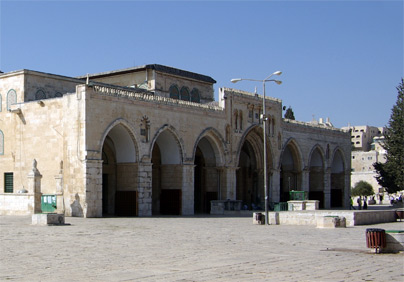 About OSMTH
About OSMTH

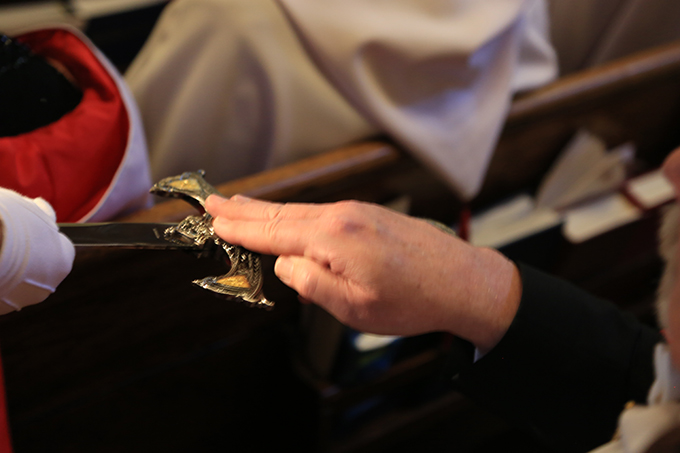
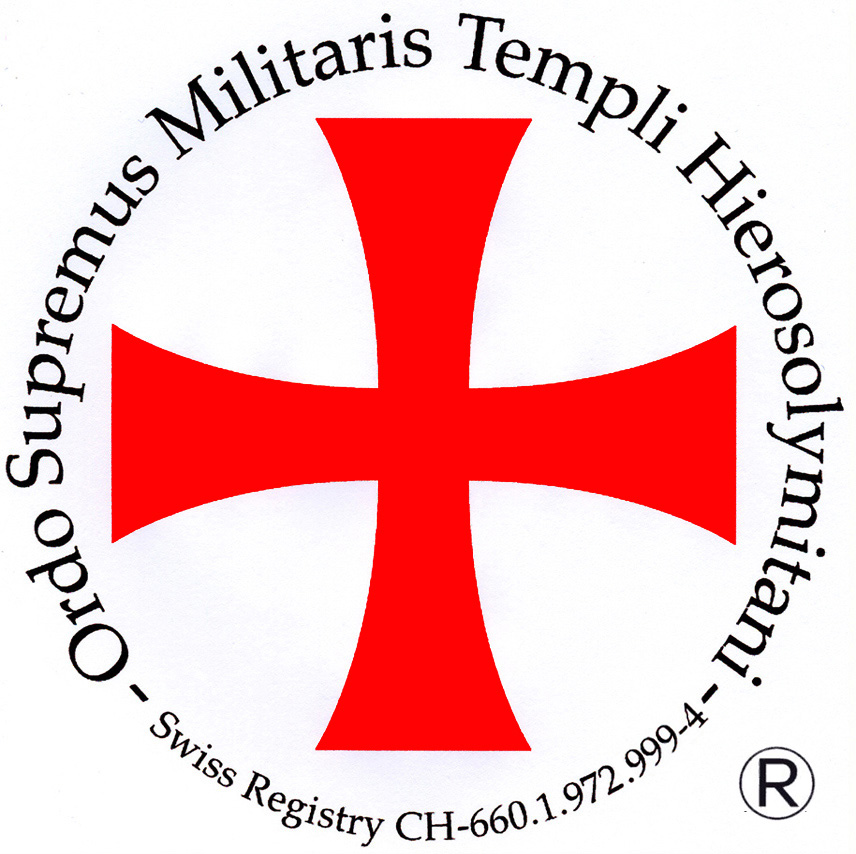




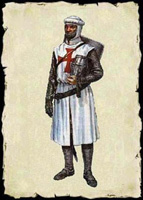 The medieval Knights Templar, best known to us today as the famed warriors of the Crusades, were a devout military religious Order that uniquely combined the roles of knight and monk in a way the Western medieval world had never seen before. Originally they were known as the Poor Knights of Christ and the Temple of Solomon, or, more simply, as the Knights Templar. In a famous letter written in the 1130s, In Praise of the New Knighthood, St Bernard of Clairvaux elevated the Templar Order above all other Orders of the day, establishing the image of the Templars as a fierce spiritual militia for Christ. He regarded them as a "new species of knighthood, previously unknown in the secular world..." To him, they were a unique combination of knight and monk; to later historians, they were the first military order, soon imitated by the Knights Hospitaller, by several Spanish orders and, by the end of the 12th century, by the Teutonic Knights. As a holy militia fighting for Christ, the Templars were willing to put aside the usual temptations of ordinary secular life for an arduous, dedicated life of service. Ever since then, the legacy of the Templars has been, first and foremost, the concept of service.
The medieval Knights Templar, best known to us today as the famed warriors of the Crusades, were a devout military religious Order that uniquely combined the roles of knight and monk in a way the Western medieval world had never seen before. Originally they were known as the Poor Knights of Christ and the Temple of Solomon, or, more simply, as the Knights Templar. In a famous letter written in the 1130s, In Praise of the New Knighthood, St Bernard of Clairvaux elevated the Templar Order above all other Orders of the day, establishing the image of the Templars as a fierce spiritual militia for Christ. He regarded them as a "new species of knighthood, previously unknown in the secular world..." To him, they were a unique combination of knight and monk; to later historians, they were the first military order, soon imitated by the Knights Hospitaller, by several Spanish orders and, by the end of the 12th century, by the Teutonic Knights. As a holy militia fighting for Christ, the Templars were willing to put aside the usual temptations of ordinary secular life for an arduous, dedicated life of service. Ever since then, the legacy of the Templars has been, first and foremost, the concept of service.  The development of a role as bankers arose out of these circumstances, for they were well placed to offer credit and change specie through their holdings in both east and west. It was a short step to move into more general finance, unconnected to crusading activity by the 1290s their house in Paris could offer a deposit bank with a cash desk open on a daily basis and specialist accountancy services of great value to contemporary secular administrations. Thus, the Templars became the bankers to nobles, kings, and Popes as well as to pilgrims on their way to and from Jerusalem and other holy sites. Our familiar "traveller's check" today is a modern-day example of using a 'letter of credit' –just as the Templars did in the 12th century, in medieval times. The Templar structure was cemented by effective communications including its own Mediterranean shipping. They had many galleys and like the Hospitallers, took part in naval warfare at times, too. They even had their own Admiral by 1301.
The development of a role as bankers arose out of these circumstances, for they were well placed to offer credit and change specie through their holdings in both east and west. It was a short step to move into more general finance, unconnected to crusading activity by the 1290s their house in Paris could offer a deposit bank with a cash desk open on a daily basis and specialist accountancy services of great value to contemporary secular administrations. Thus, the Templars became the bankers to nobles, kings, and Popes as well as to pilgrims on their way to and from Jerusalem and other holy sites. Our familiar "traveller's check" today is a modern-day example of using a 'letter of credit' –just as the Templars did in the 12th century, in medieval times. The Templar structure was cemented by effective communications including its own Mediterranean shipping. They had many galleys and like the Hospitallers, took part in naval warfare at times, too. They even had their own Admiral by 1301. 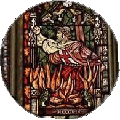 The loss of Acre in 1291 and the Mamluk conquest of Palestine and Syria have often been seen as a turning-point in Templar history, for the Order was apparently left without a specific role in a society still profoundly imbued with the idea of its own organic unity. Indeed, the failure of the military orders to prevent the advance of Islam had attracted criticism since at least the 1230s with the loss of the Christian hold on the mainland, opponents were provided with a specific focus for their attacks. The more constructive of these critics advocated a union of the Temple and the Hospital as the first step in a thorough reassessment of their activities, although the Orders themselves showed little enthusiasm for such schemes. There was, however, no suggestion that either order be abolished. In fact, the Templars continued to pursue the holy war with some vigor from their based in Cyprus for they did not see the events of 1291 as inevitably presaging the decine of crusading. The attack on them by Philippe IV, King of France, in October 1307, ostensibly on the grounds of "vehement suspicion" of heresy and blasphemy, therefore owes more to the potent combination of a king afflicted by a morbid religiosity on the one hand and an administration in severe financial trouble on the other, than it does to any failings of the Templars. In fact, the Templars (unlike the Hospitallers) had never previously been accused of heresy. In the end, neither the limited intervention by Pope Clement V nor an energetic defense by some Templars, could save the Order, which was suppressed by the papal bull Vox in excelso in 1312. Its goods and properties were then transferred over to the Hospitallers. Although the Order itself was suppressed, many of the knights fled and went underground, or joined other Orders. Their extraordinary legacy and memory still live on today, nearly nine centuries later.
The loss of Acre in 1291 and the Mamluk conquest of Palestine and Syria have often been seen as a turning-point in Templar history, for the Order was apparently left without a specific role in a society still profoundly imbued with the idea of its own organic unity. Indeed, the failure of the military orders to prevent the advance of Islam had attracted criticism since at least the 1230s with the loss of the Christian hold on the mainland, opponents were provided with a specific focus for their attacks. The more constructive of these critics advocated a union of the Temple and the Hospital as the first step in a thorough reassessment of their activities, although the Orders themselves showed little enthusiasm for such schemes. There was, however, no suggestion that either order be abolished. In fact, the Templars continued to pursue the holy war with some vigor from their based in Cyprus for they did not see the events of 1291 as inevitably presaging the decine of crusading. The attack on them by Philippe IV, King of France, in October 1307, ostensibly on the grounds of "vehement suspicion" of heresy and blasphemy, therefore owes more to the potent combination of a king afflicted by a morbid religiosity on the one hand and an administration in severe financial trouble on the other, than it does to any failings of the Templars. In fact, the Templars (unlike the Hospitallers) had never previously been accused of heresy. In the end, neither the limited intervention by Pope Clement V nor an energetic defense by some Templars, could save the Order, which was suppressed by the papal bull Vox in excelso in 1312. Its goods and properties were then transferred over to the Hospitallers. Although the Order itself was suppressed, many of the knights fled and went underground, or joined other Orders. Their extraordinary legacy and memory still live on today, nearly nine centuries later.